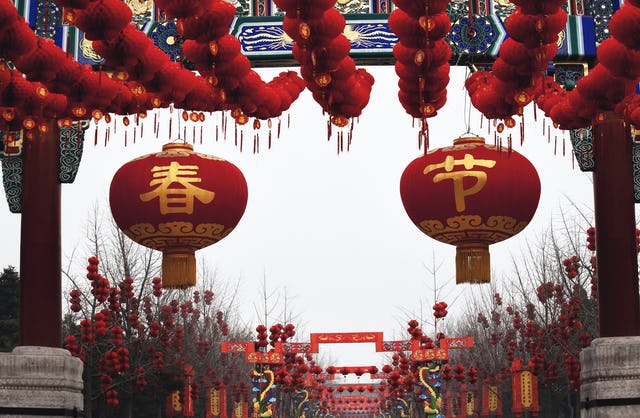Chinese New Year: what you need to know
March 4, 2021
China’s most important public holiday, the Chinese New Year, falls on February 12. Usually the celebration lasts 16 days, starting from New Year’s Eve, which is referred to as the Reunion Day for every Chinese family due to many family gatherings, to the Lantern Festival, when lanterns are sent up flying and people look at the moon.
Unfortunately, there are no major celebrations this year due to the global pandemic. To discourage people from traveling and gathering, China’s National Health Commission has imposed new rules that require people returning to rural areas to produce a negative Covid-19 test and to spend 14 days in quarantine. The new restrictions have been opposed by many, as they had hoped to go back home to celebrate the holiday with their family.
According to the Lunar Calendar, there is no set date for the new year, unlike western holidays, but similar Christmas and Thanksgiving which always fall on specific dates, calculated by the Gregorian Calendar, the date of Chinese New Year is all over the place, ranging from January 21st to February 20.
The Chinese New Year is very often called Chunjie, or Spring Festival, in China, since the holiday marks the end of the coldest days, when people welcome spring and what it brings along: planting and harvest, new beginnings, and fresh starts. Furthermore, it is also referred to as the Lunar New Year, since countries such as North and South Korea and Vietnam celebrate it as well. As an agrarian society, it was originally a ceremonial day to pray to gods for a good planting and harvest season, but it has turned it to so much more. At midnight, people set off fireworks, which are supposed to scare off monsters and bad luck, according to the myth of Nian. Moreover, it causes the largest human migration in the world, since everyone is expected to go back home for New Year’s Eve dinner. In modern China, most elderly parents live in rural areas while their children work in the cities. This migration back home is called Chunyun, or Spring Migration.
Some of the traditions include no sweeping or throwing out garbage before the 5th to make sure they don’t “wash away” bad luck. On the other hand, the day, before the Spring Festival, is dedicated to cleaning to “sweep” the bad luck away and “make room” for the good. In addition to this, haircutting, using scissors, knives and other sharp things, swearing, saying unlucky words, such as death, sickness, and breaking things are absolutely taboos during the Chinese New Year.
Children receive lucky money in red envelopes which symbolizes the transferring of the future from the elderly to the young. They can also be given between bosses, employees, co-workers, and friends. To have good luck, the Chinese eat dumplings, sponge cake, and rice cake which represents success, for New Year’s Eve dinner. As a Chinese saying states “there’s no manners and/or etiquette without wine,” there is wine specifically for the Spring Festival. However, strict toasting etiquette rules must be followed, including order of toasts, seating, and how you can hold the wine glass. 202



















